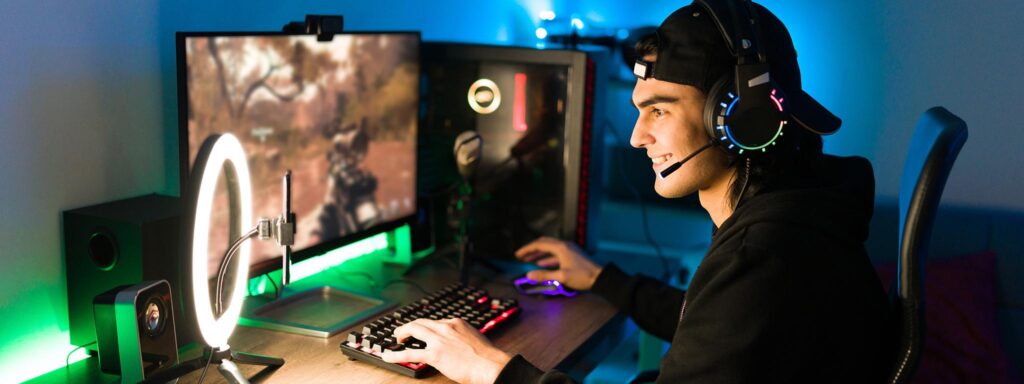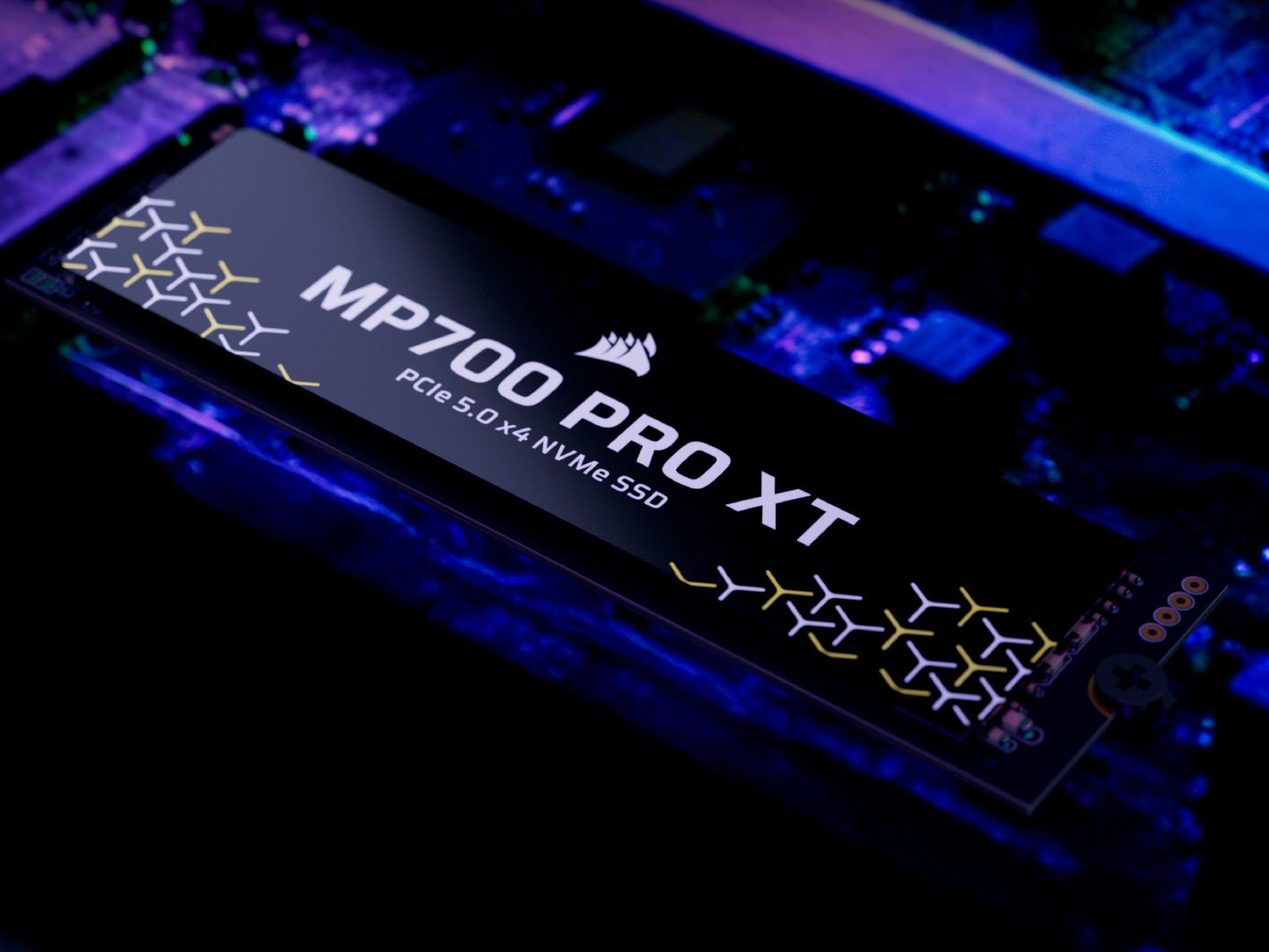- DirectStorage shifts decompression to the GPU and reduces CPU load by 20% to 40%.
- Requires NVMe SSD, GPU with DX12/SM 6.0 and Windows 11 or Windows 10 v1909+.
- The Game Bar may indicate 'optimized' on prepared systems; the game must support it.
- It allows for sharper textures, less pop-in, and much faster loading times in compatible titles.

Loading times and performance are key aspects when gaming on your PC. In this regard, enabling DirectStorage in Windows is essential. This Microsoft technology is designed to allow games to truly take advantage of the processor's speed. Modern NVMe SSDs.
By transferring tasks previously performed by the processor to the graphics card, Bottlenecks are reduced and resource loading is accelerated This is noticeable both when starting a game and as the game world unfolds. The idea is simple yet powerful: instead of the CPU decompressing the game data stored on the disk, it's sent directly to the GPU's video memory for decompression.
What is DirectStorage and how does it work?
Direct Storage It's a Microsoft API designed to streamline access to game data stored on the game drive. Instead of going through intermediate steps, The compressed graphics data travels from the SSD to the VRAM And there, the GPU takes over, decompressing them at full speed. This more direct flow minimizes the CPU's workload, frees up resources for other tasks, and accelerates the delivery of textures, meshes, and other resources to the game engine.
This architecture enables something crucial for PCs: truly leveraging the speed of modern NVMe SSDs. With an NVMe drive, especially a PCIe 4.0 one, bandwidth is very high and latency is low, so The game's resources arrive earlier and in better condition.The result is that the game not only starts up faster, but the transmission of content within the game is also more stable.
The practical impact of enabling DirectStorage on Windows is clear: developers can use sharper, heavier textures, or build larger open worlds. without this implying 'judders', 'dropouts' or glitches provided the player's computer meets the requirements. Furthermore, by offloading work from the CPU, frame rates can remain more stable in scenes with numerous objects and effects.
In terms of user experience, this is noticeable when you walk through an open world and don't see objects appear two steps away from you. With DirectStorage, The elements blend naturally into the horizonHigh-resolution textures arrive on time, and new areas load with less waiting. It's the kind of improvement that, once you get used to it, is hard to go back to.
- Less load on the CPU: The GPU decompresses game data faster and more efficiently.
- Smoother asset transfer: Textures and models reach the VRAM without avoidable bottlenecks.
- Larger and more detailed worlds: More NPCs and elements without sacrificing stability.
- Shorter waiting times: faster initial loads and internal transitions.
Origin and current state of the technology
DirectStorage originated in the Xbox Series X/S ecosystem, where it was designed to take advantage of fast storage with a more direct data path. Microsoft later brought it to Windows, where It is automatically included in Windows 11 and it is also compatible with Windows 10 from version 1909 onwards.
Despite its potential, we must be realistic: It is a relatively new technology. On PC, it's still relatively new, and there are few games that implement it. The good news is that titles that take advantage of it are on the way, and studios are integrating it to leverage both NVMe SSDs and modern GPUs.
One of the first PC games to announce compatibility was Forespoken, from the well-known developer Square Enix. According to the announcement, The title would be capable of achieving loading times of less than one second Thanks to DirectStorage, it now has adequate storage. It was also noted that its launch would take place in October, barring any last-minute setbacks.
For DirectStorage to truly shine, it is essential that it be taken into account from the development phase onwards: Decompression and data transfer should be designed with the API in mind.Without that integration into the game itself, no matter how advanced your hardware is, the reduction in loading times will be limited.
Requirements and compatibility on Windows
To use DirectStorage, you need a minimum set of components and software; if you're thinking about buy an ultra-high-end laptopPlease note these requirements. If your computer meets them, the system will be able to take advantage of this accelerated data path when the game supports it. Conversely, if any puzzle piece is missingYou won't see the full benefits.
- Operating system: Windows 11 has it built-in; Windows 10 is also compatible from version 1909 onwards.
- Storage unit: An NVMe SSD is recommended; with PCIe 4.0 NVMe Loading times are shortened even further compared to a traditional SATA SSD.
- Graphic card: Compatible with DirectX 12 and Shader Model 6.0, to be able to handle decompression on the GPU.
- Compatible Games: The title must implement DirectStorage; without in-game support, Its advantages are not activated.
An interesting detail is that Microsoft has updated the Game Bar in Windows 11 to show, as a diagnostic tool, whether the system is ready for DirectStorage. A message like 'optimized' may appear in that interface for compatible drives. indicating that the SSD, GPU, and operating system complyIt's a quick way to verify that the environment is ready.

How to check and 'activate' DirectStorage on your PC
One important point: DirectStorage isn't a magic switch you flip on a hidden panel. If you meet the requirements, The support is activated transparently And the game will use it without you having to adjust too many settings. Even so, there are steps you should take to make sure everything is working correctly.
- Check the equipment compatibility: Make sure you're using Windows 11 (or Windows 10 v1909+), that your GPU supports DirectX 12 with Shader Model 6.0, and that you have an NVMe SSD for gaming.
- Update the system: In Settings → Update & Security → Windows Update, click on 'Check for updates' to install the latest improvements. fine-tune the storage support.
- Check out the Game Bar: In Windows 11, the Game Bar can indicate whether drives and components are 'optimized' for DirectStorage; if you see it on your NVMe SSD, it is a good sign.
- Check the game settings: Some titles may display specific options or notices; if the developer requires it, follow your documentation to get the most out of it.
With these steps covered, if the game incorporates the API, you'll see benefits without any juggling. However, remember that The key is that the title implements DirectStorageWithout that part, no matter how prepared your PC is, there will be no miracles.
Practical benefits in gaming: from the desktop to the open world
One of the most striking promises linked to activating DirectStorage came from Forespood, which pointed to loads below the second under the right conditions. Beyond the waiting time on loading screens, the biggest impact is felt within the game itself, when a massive area has to be streamed without pauses.
In open worlds, when you move quickly or rotate the camera, the engine needs new data instantly. With this API, GPU decompression and the direct path from NVMe They reduce latency, so assets arrive on time and integrate better, with less object pop-in.
Furthermore, enabling DirectStorage allows developers to push visual detail further without fear of overloading the processor. They can include higher resolution textures and more NPCs without the CPU being overwhelmed by managing the decompression of large batches of data. This extra headroom translates into richer scenes and more robust frame pacing stability.
Another positive side effect of enabling DirectStorage in Windows is that, by reducing the CPU's role in these tasks, The processor load typically drops by between 20% and 40%.This margin can be used for AI, simulation, physics, or simply to maintain a more consistent frame rate in complex situations.
The vision behind DirectStorage aligns with the evolution of hardware: increasingly faster NVMe SSDs and GPUs capable of handling not only rendering but also decompression tasks. The net result is a more efficient data flow which fits with the ambitions of current games.
Limitations, nuances, and realistic expectations
While it looks very promising, it's important to be realistic. Enabling DirectStorage isn't yet possible in many games. If the game doesn't support it, there won't be any difference, no matter how up-to-date your system is.
It's also important to consider that the initial storage capacity matters. An NVMe SSD offers significantly higher bandwidth and latency than a SATA drive, so To notice the improvement, it's best to have the game installed on NVMe.The technology works with the stated baseline, but its effect shines brighter the better the hardware.
From a development perspective, simply 'ticking a box' is not enough. Properly integrating DirectStorage involves design the loading and decompression of assets with the API from the project's inception. That investment of time pays off in smoother gameplay and more ambitious content.
Finally, if you use Windows 10, remember that compatibility exists from version 1909 onwards, but Windows 11 focuses on optimizations thinner and the latest storage improvements surrounding this technology and other gaming features.
Quick checks and best practices
To make sure you're ready, take a moment to Review a few simple points before enabling DirectStorage in WindowsThese are common-sense steps to activate DirectStorage, but they make all the difference when it comes to avoiding surprises when a game announces support.
- Install the game on the NVMe drive: This is how DirectStorage gets the bandwidth it needs.
- Keep your drivers and system up to date: GPU and Windows updates They usually include improvements in storage and compatibility; you can also disable animations and transparencies to make Windows 11 perform better.
- See developer notes: If a title adds support, they usually indicate recommendations and requirements to get real benefit.
- Use the Game Bar as a reference: See 'optimized' on your compatible drives It gives peace of mind about the configuration.
With these guidelines, when more compatible games become available, you won't have to do anything special. Your system will already be ready. so that the game engine activates the accelerated data path and offloads the heavy work to the GPU.
Enabling DirectStorage is more than just a passing fad. It's a feature designed for the present of PC storage and the immediate future of game development. When the game implements it and the hardware supports itThe benefits are tangible: less waiting, more fluidity, and greater creative scope for studies.
Editor specialized in technology and internet issues with more than ten years of experience in different digital media. I have worked as an editor and content creator for e-commerce, communication, online marketing and advertising companies. I have also written on economics, finance and other sectors websites. My work is also my passion. Now, through my articles in Tecnobits, I try to explore all the news and new opportunities that the world of technology offers us every day to improve our lives.

